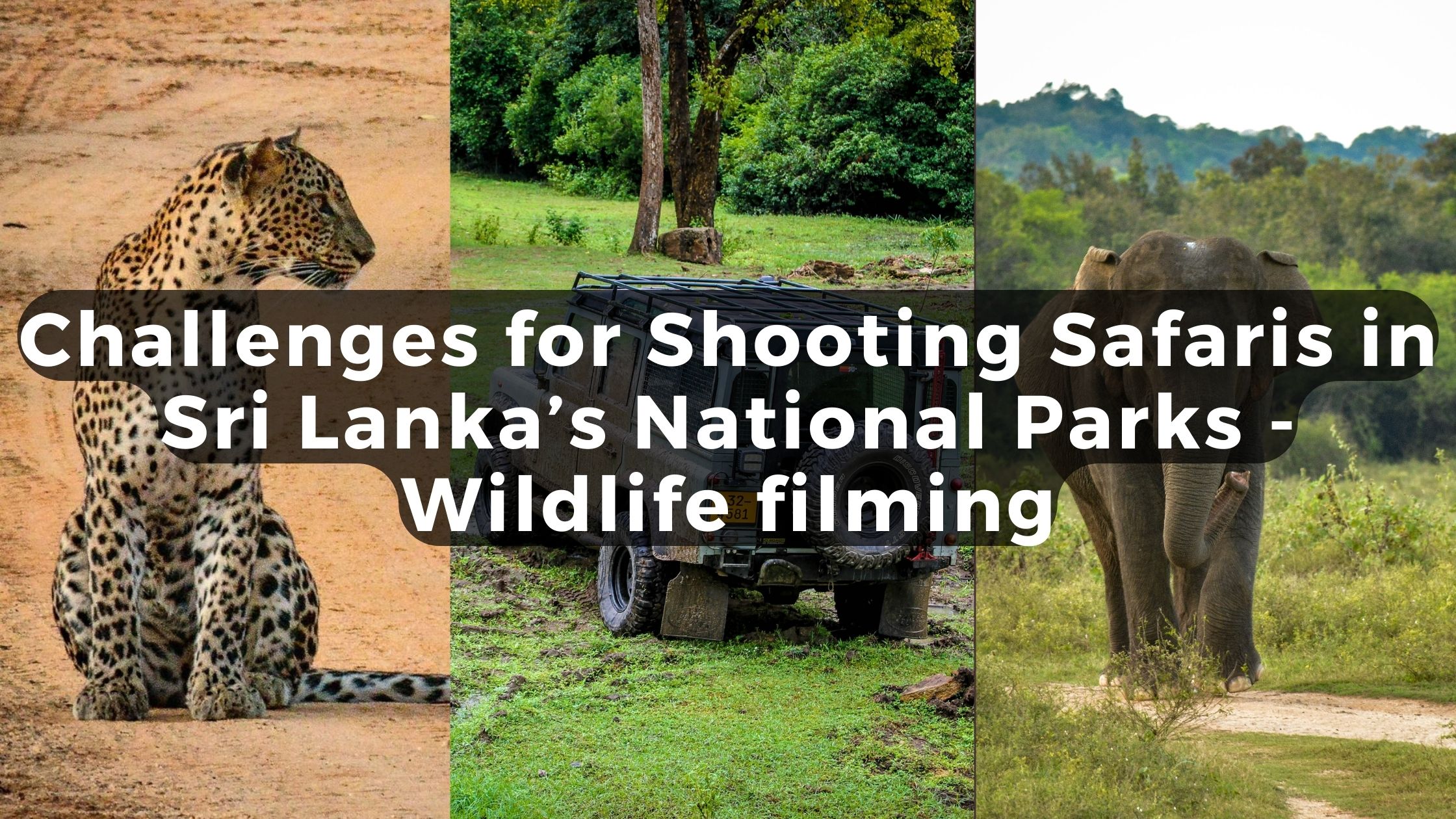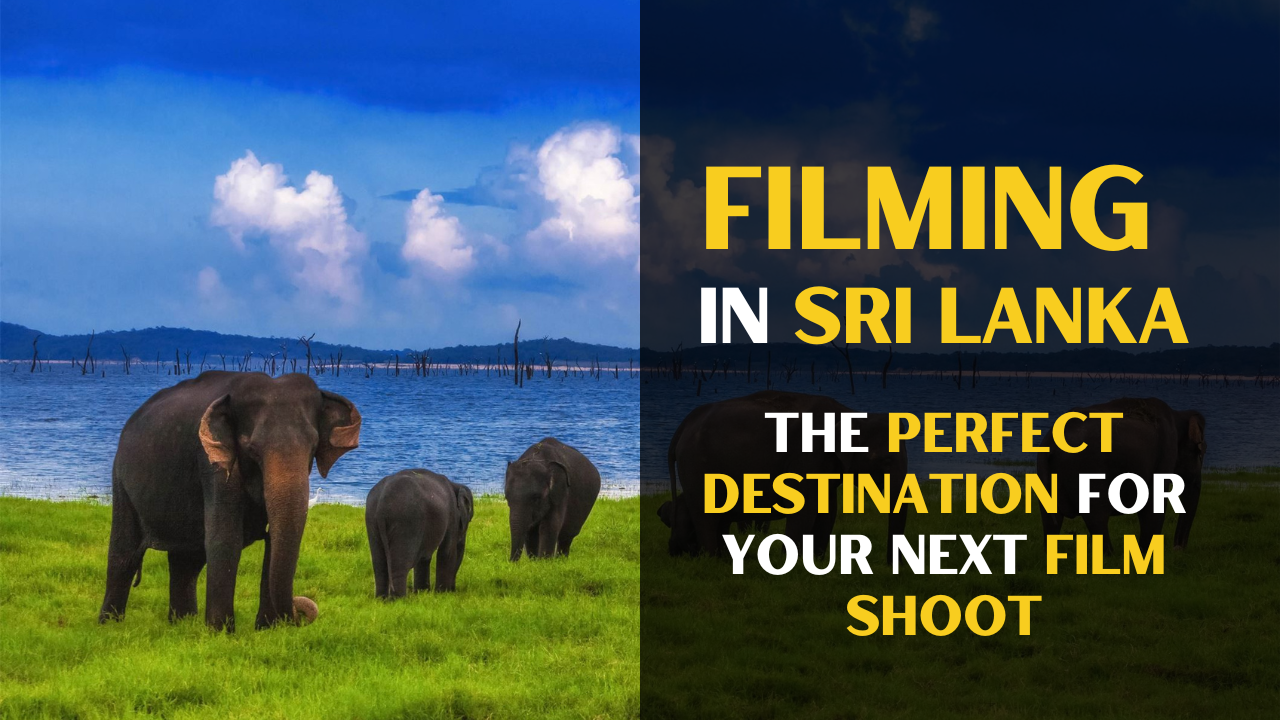Lying on this geographical feature Sri Lanka boast of a number of national parks, which are among the best in the world regarding scenic views and Wildlife, making them ideal for Wildlife filming and safari shoots. From the largest mammal – elephants in Udawalawe to one of the most elusive creatures- Leopards of Yala, the country boasts of a variety of wildlife. Nevertheless, the following is important to know; although the backdrops in these parks are magnificent and awe inspiring, there are issues that are unique to Wildlife filming in safaris within Sri Lanka’s national parks. This is important for any production regardless of the type of production that an individual is undertaking whether as a hobbyist or as a professional.
Aim of this article is to discuss the most significant problems that directors and camera operators face during shooting in Sri Lanka national parks and how to avoid them.
Unpredictable Weather Conditions in wildlife
Shooting safaris are a problem in Sri Lanka because of its variable tropical climate which brings changes in weather patterns. Unexpected rains or very hot weather can cause inconvenience especially during shooting by either affecting the schedule and or come in the middle of the shoot to wash away the scene that took a lot of time to set or even affect visibility. The best time to film is during the dry season which is from May to September however sometimes the weather can prove erratic.
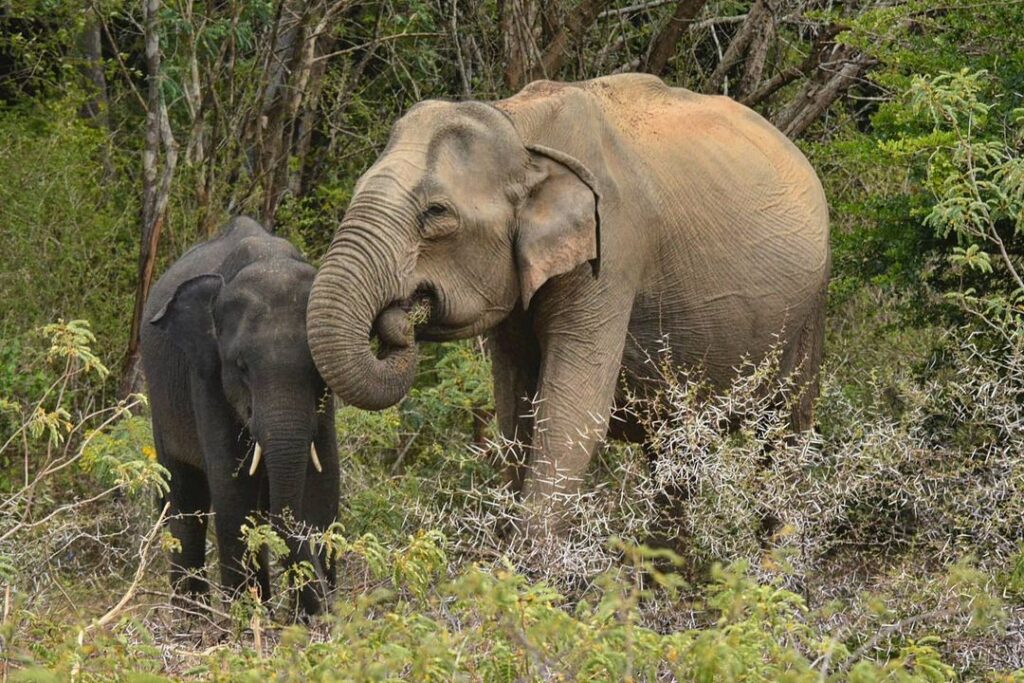

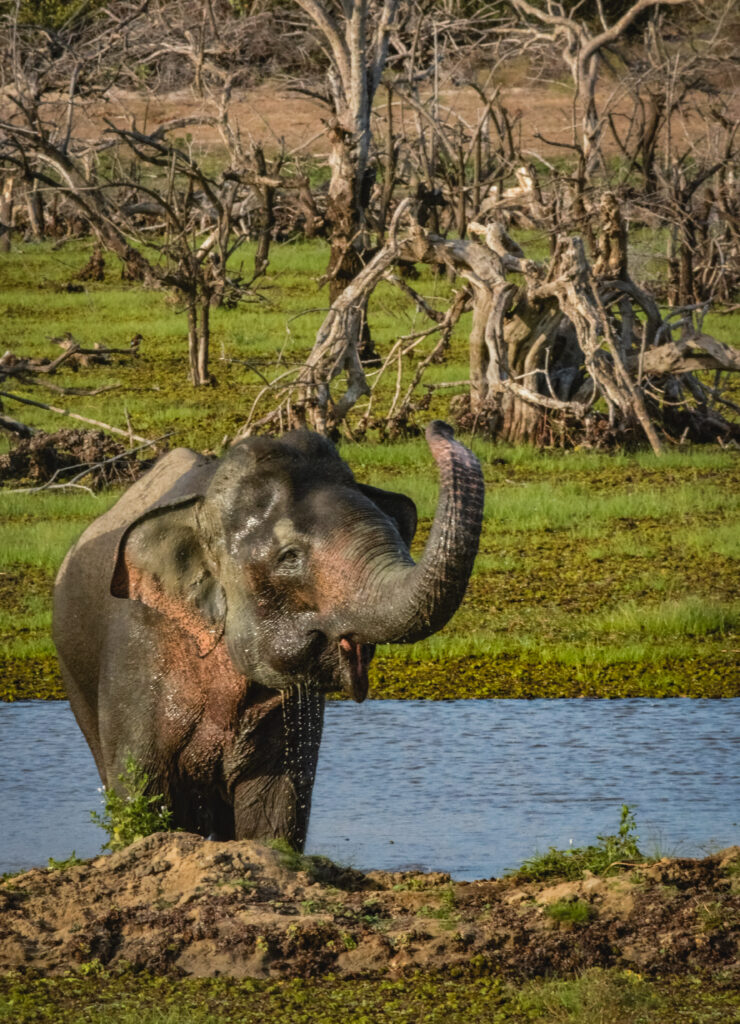
Tips to Overcome:
- Ensure you always carry your waterproof equipment, and protective carry cases for the cameras and lenses.
- Take additional batteries, because hot weather affects batteries and discharges them much quicker as compared to normal conditions.
- Be aware of the changes in the weather especially during the monsoon periods of the year to plan for changes in the scheduled events.


Some Premises and Accommodation Secured
Sri Lanka’s authorities fully control the national park area to preserve wildlife and other species. They close off some parts of the parks, and filming the animals may not be possible because it can interfere with their activities. For instance, they forbid approaching wildlife habitats, such as areas where leopard dens are located, to avoid affecting the animals’ normal behavior.
Tips to Overcome:
- Get necessary permits from the Department of Wildlife Conservation (DWC) before time so that you have enough time for any complexities.
- Discuss with the park rangers and tour guides that understand the terrain in the park and the most appropriate areas for shooting while observing the law.
- Find the shooting areas in advance to discover beautiful shots and adhere to the park’s rules and regulations for exploration.



Wildlife Unpredictability
While shooting in studios is more of a procedural activity, photographing wildlife in parks is more or less chaotic. Unusual things happen to animals and there is little or no guarantee that specific filmmakers will stumble upon specific species or meet specific behaviors. For example, leopards are nocturnal animals and although one may sit and wait for them for hours they will not come out.
Tips to Overcome:
- One should anticipate spending a lot of time in the park and be prepared to spend more time than expected to get what they desire.
- Learn more of the behavior patterns of the wildlife that you intend to capture. One should always try to spot the animals either very early in the morning, or towards the latter half of the evening.
- When taking pictures of wildlife, avoid disturbing or distracting the animals by keeping a safe distance or using a telephoto lens.

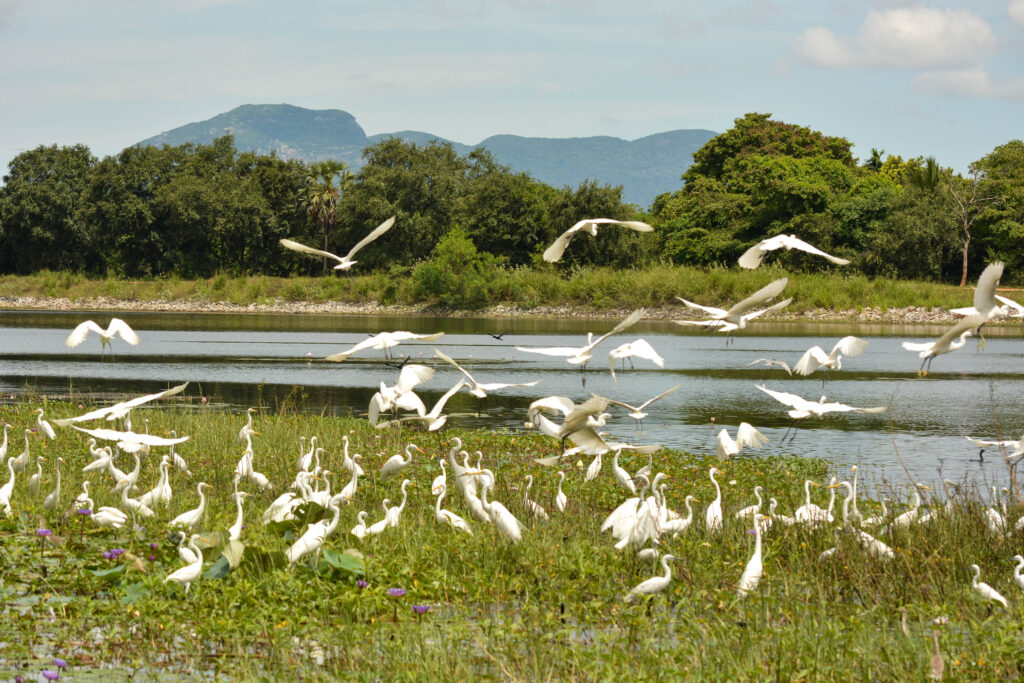

Loss due to Dust and Terrain on equipments that were used.
Many of the national parks in Sri Lanka are sandy especially during the dry season of the year. Stomping on the sand means the crews must run from one spot to another over abrasive surfaces which after a while rub off the dust onto the lens, sensor and other accessories, which can be quite dangerous. Also, the conditions of the roads, for instance, are rugged, will lead to mishandling or even malfunction of equipment.
Tips to Overcome:
- It is always advisable to carry cleaner kits along in order to minimize frequency of cleaning lenses and equipment when the inevitable happens.
- Carry spare batteries, a spare charger and some extra memory cards with you as well as buy strong, shock proof cases for cameras.
- To avoid an introduction of dust to the equipment during the shoots, use lens hoods and covers.



Little Light During The Time You Are In The Safari
majority of the National Parks in Sri Lanka has limited window times for safaris which start early in the morning and closes down by evening. Although there are some hours in a day where the natural light is best for shooting, these are few. Also, some of the frames might need some lighting which could not be obtained within the park by-the-hour lighting.
Tips to Overcome:
- Make sure you position yourself well around the natural light that comes in especially during the early morning and evening.
- Sometimes natural light needs to be supplemented by reflectors or some other portable lighting equipment.
- Lighting: Make the most of the ‘golden hours’ of the day, that is the early morning and the late afternoon.
Communication Barriers
Sri Lanka’s national parks are mostly situated in less populated areas with poor reception of cells phone signals. This can complicate communication between the team members especially when managing big production crews or when searching for a location far from the camp.
Tips to Overcome:
- One should use two-way radios as means of communication within a team to minimize reliance on cellular networks.
- There should be laid down policies on the way communication should take place and in case of any breakdown, the ‘plan B’.
- Collaborate with people from the production area in order to identify the best places to shoot a scene and other organization related issues.
Ethical Wildlife Filming Practices
One of the greatest challenges for filmmakers in Sri Lanka’s national parks is ensuring that they adhere to ethical filming practices. It’s crucial not to disturb or distress the wildlife in any way during shoots. This includes avoiding actions that may provoke animals or disrupt their habitats for the sake of capturing dramatic footage.
Tips to Overcome:
- Always prioritize the well-being of the animals over the shot. Use long lenses to film from a safe and non-invasive distance.
- Educate your crew on ethical wildlife filming practices and the importance of conservation
- Follow all park rules and guidelines to ensure that your presence does not negatively impact the environment or wildlife.
Logistical Challenges in Remote Locations
National parks in Sri Lanka are often located in remote areas with limited facilities. Filmmakers may face logistical challenges, such as finding suitable accommodation, transporting equipment, and accessing reliable food and water sources.
Tips to Overcome:
- Plan ahead and coordinate with local tour operators who specialize in safari experiences and are familiar with the logistical challenges
- Pack essential supplies, including food, water, and camping gear, if necessary, to ensure that the crew prepares well for the remote locations. Utilize local talent and services by hiring local guides and drivers who know the area.
- Utilize local talent and services, including hiring local guides and drivers who are familiar with the area.
Conclusion
Shooting safaris in Sri Lanka’s national parks offers filmmakers the opportunity to capture some of the most stunning wildlife and landscapes in the world. However, careful planning and preparation must address the challenges that unpredictable wildlife, weather, and logistical constraints present. By following these tips, filmmakers can overcome these obstacles and produce breathtaking footage while respecting the natural environment of Sri Lanka’s national parks.
Our Related Articles:
A Cinematic Paradise Exploring the Top Beach Locations for Filming in Asia (circle360lk.com)
Lights, Camera, Action! Discover the Magic of Filming in Sri Lanka (circle360lk.com

